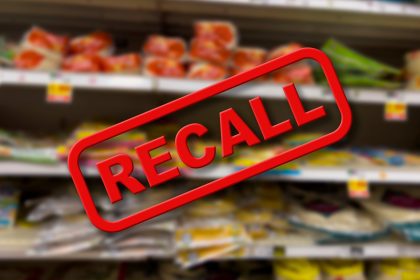A comprehensive investigation by Tufts University researchers has exposed a significant blind spot in the online grocery shopping experience: the widespread absence of essential nutritional information. The study reveals that 65% of examined grocery items lack clear nutritional details, highlighting a growing disconnect between digital convenience and informed food choices.
With more consumers turning to online platforms for their grocery needs, the lack of transparency in digital food labeling presents a growing concern. While physical stores require clear nutrition facts, the online marketplace operates with fewer regulations, allowing retailers to omit crucial information. This gap raises pressing questions about food safety, consumer rights, and the responsibility of digital grocers.
Inside the research methodology
A detailed examination of major food retailers revealed a startling pattern of missing nutritional information. Researchers analyzed 60 staple food items across eight major categories on leading retail platforms, representing 79% of the U.S. online grocery market. The study assessed the availability of critical details, including ingredient lists, allergen warnings, and full nutrition facts.
The analysis focused on a mix of commonly purchased products, ensuring a representative sample of what the average shopper might encounter. The absence of clear labeling was particularly evident in high-consumption categories, raising concerns about consumer health and safety.
Categories of concern
Certain food groups displayed severe transparency issues. The study found that meat and egg products had some of the most alarming gaps, with full nutritional details available for only 24% of examined items. Bakery goods and snacks followed closely, showing significant deficiencies in allergen disclosures and ingredient transparency.
For individuals with dietary restrictions or allergies, this lack of detail poses a real risk. Without accessible ingredient lists, consumers are forced to make decisions with incomplete information, potentially leading to adverse health consequences. Even everyday shoppers looking to monitor their intake of sugar, sodium, or preservatives are left without the necessary tools to make informed choices.
Regulatory landscape
Physical stores follow strict FDA guidelines, but online retailers operate in a gray area. Under federal regulations, food packaging in brick-and-mortar stores must include detailed nutrition facts. However, digital grocery platforms face far fewer requirements, leaving a gap in oversight.
Retailers currently have broad discretion over how much information they disclose online, often leading to inconsistencies between product pages. While some brands voluntarily provide full nutritional details, many listings offer only basic descriptions, omitting key health data. The regulatory gap allows this practice to continue unchecked, creating a significant challenge for consumers seeking reliable information.
Consumer health implications
The missing nutritional details could negatively impact public health. Studies show that consumers who actively engage with food labels tend to make healthier dietary choices. When essential information is hidden or incomplete, shoppers may unknowingly purchase products high in sugar, sodium, or unhealthy additives.
For those managing conditions like diabetes, hypertension, or food allergies, this lack of transparency can be particularly harmful. Nutrition-conscious buyers rely on accurate ingredient lists to make informed decisions, and without them, maintaining a balanced diet becomes significantly more challenging.
The rise of online grocery shopping has made access to food more convenient, but it has also introduced new risks. Without standardized digital labeling, many consumers may unknowingly consume foods that do not align with their dietary needs or health goals.
Navigating the digital grocery landscape
Shoppers have developed strategies to compensate for missing information. Many consumers turn to manufacturer websites to verify ingredients and nutrition facts, but this process is time-consuming and inconsistent. Others rely on familiar brands they trust, avoiding unfamiliar products with incomplete descriptions.
Advocacy for better transparency is also growing. Some consumers provide direct feedback to retailers, requesting improved labeling practices. Others support policies that push for clearer online food labeling regulations. However, until comprehensive changes are made, consumers must remain vigilant in verifying the details of their grocery purchases.
Future of online grocery information
Change may be coming, but progress is slow. Recent FDA initiatives suggest that regulatory oversight could expand to digital grocery platforms. The agency’s 2023 Request for Information regarding online food labeling practices indicates an acknowledgment of the issue, but official regulations remain in development.
If new guidelines are implemented, online retailers may be required to provide complete nutritional transparency, aligning digital listings with the standards applied to in-store products. These changes could transform the online grocery shopping experience, ensuring that consumers have access to the same level of information regardless of where they shop.
Until then, shoppers must remain cautious. As online grocery shopping continues to grow, so does the responsibility of digital retailers to provide accurate and complete product information. The future of food transparency depends on both regulatory action and consumer demand for better practices.















